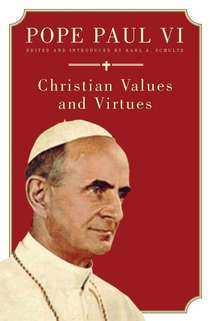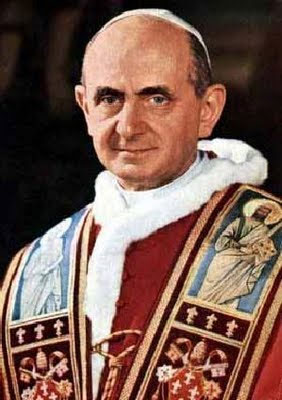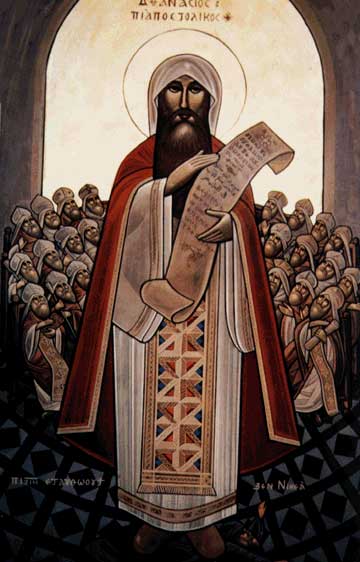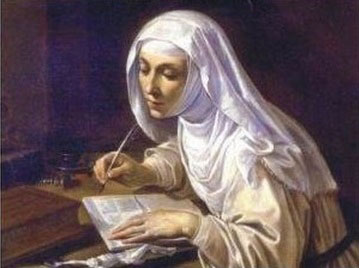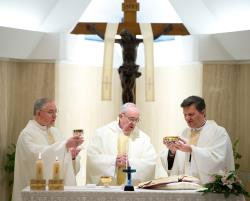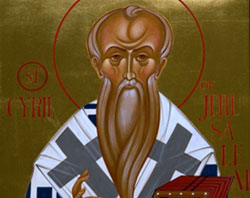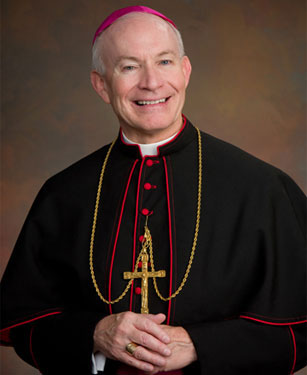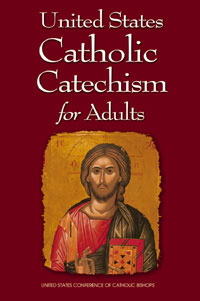Dr. Matthew Bunson discusses the life, times and work of  St. Athanasius of Alexandria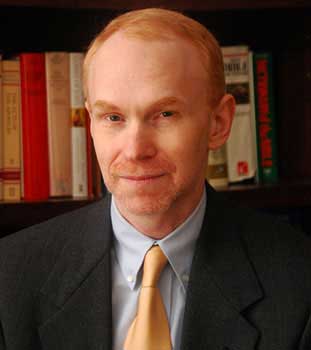
[powerpress]
For more on St. Athanasius of Alexandria and his teachings
AthanasiusÂ
-Â On the Incarnation of the Word
-Â Deposition of Arius
-Â Statement of Faith
-Â On Luke 10:22 (Matthew 11:27)
-Â Circular Letter
-Â Apologia Contra Arianos
-Â De Decretis
-Â De Sententia Dionysii
-Â Vita S. Antoni (Life of St. Anthony)
-Â Ad Episcopus Aegypti et Libyae
-Â Apologia ad Constantium
-Â Apologia de Fuga
-Â Historia Arianorum
-Â Four Discourses Against the Arians
-Â De Synodis
-Â Tomus ad Antiochenos
-Â Ad Afros Epistola Synodica
-Â Historia Acephala
-Â Letters
Athanasius was undoubtedly one of the most important and revered early Church Fathers. But this great Saint was above all the impassioned theologian of the Incarnation of the Logos, the Word of God who – as the Prologue of the fourth Gospel says – “became flesh and dwelt among us” (Jn 1: 14).
For this very reason Athanasius was also the most important and tenacious adversary of the Arian heresy, which at that time threatened faith in Christ, reduced to a creature “halfway” between God and man, according to a recurring tendency in history which we also see manifested today in various forms.
In all likelihood Athanasius was born in Alexandria, Egypt, in about the year 300 A.D. He received a good education before becoming a deacon and secretary to the Bishop of Alexandria, the great Egyptian metropolis. As a close collaborator of his Bishop, the young cleric took part with him in the Council of Nicaea, the first Ecumenical Council, convoked by the Emperor Constantine in May 325 A.D. to ensure Church unity. The Nicene Fathers were thus able to address various issues and primarily the serious problem that had arisen a few years earlier from the preaching of the Alexandrian priest, Arius.
With his theory, Arius threatened authentic faith in Christ, declaring that the Logos was not a true God but a created God, a creature “halfway” between God and man who hence remained for ever inaccessible to us. The Bishops gathered in Nicaea responded by developing and establishing the “Symbol of faith” [“Creed”] which, completed later at the First Council of Constantinople, has endured in the traditions of various Christian denominations and in the liturgy as the Niceno-Constantinopolitan Creed.
In this fundamental text – which expresses the faith of the undivided Church and which we also recite today, every Sunday, in the Eucharistic celebration – the Greek term homooúsiosis featured, in Latin consubstantialis: it means that the Son, the Logos, is “of the same substance” as the Father, he is God of God, he is his substance. Thus, the full divinity of the Son, which was denied by the Arians, was brought into the limelight.
For more visit Vatican.va
Dr. Matthew Bunson, Senior Fellow of the St. Paul Center for Biblical Theology, is one of the United States’ leading authorities on the papacy and the Church.
His books include: The Encyclopedia of Catholic History; The Encyclopedia of Saints; Papal Wisdom; All Shall Be Well; Encyclopedia of the Roman Empire; and The Angelic Doctor: The Life and World of St. Thomas Aquinas; The Pope Encyclopedia; We Have a Pope! Benedict XVI, the first Catholic biography of the Holy Father in the English language; the Encyclopedia of U.S. Catholic History; Pope Francis. Â His also the editor of OSV’s “The Catholic Answer” magazine.
Tags: Church, church fathers, faith, matthew bunson, work
This entry was posted on Friday, September 6th, 2013 at 11:15 am
You can follow any responses to this entry through the RSS 2.0 feed.
Holy Eucharist
[powerpress]
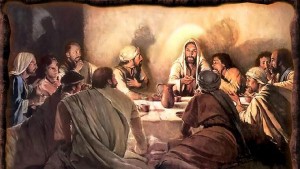 On this faith check let’s talk about the Holy Eucharist.
On this faith check let’s talk about the Holy Eucharist.
Catholics believe that the bread and wine are more than just symbolic reminders. By the power of God working through the priest they are transformed into Christ’s Body and Blood.
Our Lord taught, “Unless you eat the flesh of the Son of Man and drink His blood you do not have life within you.â€1 The Jews scoffed at this and asked, “How can He give us his flesh to eat.â€Â Even His disciples said this was a hard saying and many stopped following Him.
Now when genuine misunderstandings occurred, Jesus corrected His listeners. But Jesus meant what He said, and did not back down: “[M]y flesh is food indeed and my blood is drink indeed … He who eats my flesh and drinks my blood has eternal life, and I will raise him up at the last day.â€
For 2,000 years the Eucharist has been the heart of the Catholic Faith. In fact, the early Christians said, “without the Eucharist we cannot live,†preferring to risk their lives rather than miss Mass. Today He invites each one of us to receive His very flesh and blood.
1-Â All citations from John 6:50 – 58
Tags: catholic apologetics, Catholic Faith, eternal life, eucharist, faith, holy eucharist
This entry was posted on Wednesday, September 4th, 2013 at 12:19 am
You can follow any responses to this entry through the RSS 2.0 feed.
Faith and the Reasoning of the Religious Mind : 19th Sunday in Ordinary Time 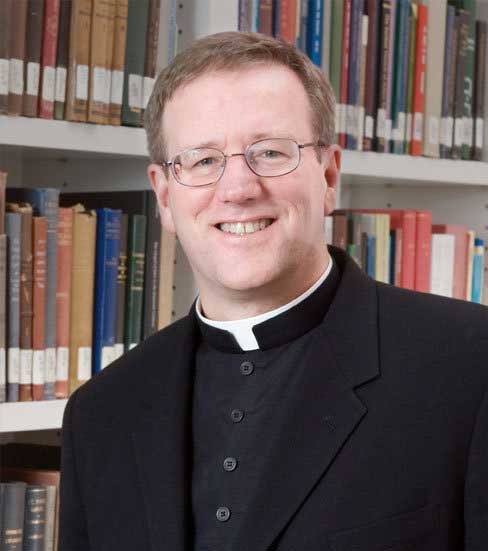
[powerpress]
God cannot be analyzed scientifically the way one would study the things of the world, but God can be approached through religious reasoning, or Faith. Faith is often criticized as unintelligent tomfoolery. Nothing could be farther from the truth. The Catholic tradition reveals that Faith is a rational reaction to God in the religious person. It is the reasoning of the religious mind.
For the readings of the Nineteenth Sunday in Ordinary Time
For more from Fr. Barron go to Word on Fire
Tags: faith, Robert Barron, truth
This entry was posted on Friday, August 9th, 2013 at 12:08 am
You can follow any responses to this entry through the RSS 2.0 feed.
Bruce and I had a conversation with Karl Schultz, editor of  “Christian Values and Virtues”  comprised of   Pope Paul VI’s 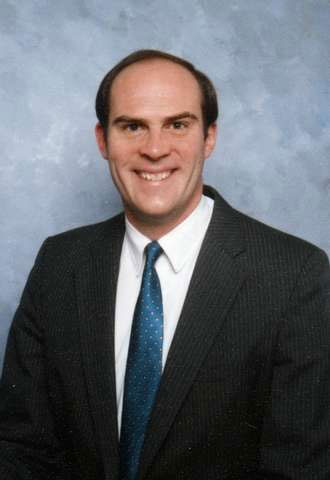 teachings on peace, hope, humility, faith, suffering, love, and joy as comprised through his public audiences and his writings. Karl also shares little known things about Pope Paul VI. This book is a must read for those interested in understanding the impact of Pope Paul VI’s papacy on the modern Catholic Church.
teachings on peace, hope, humility, faith, suffering, love, and joy as comprised through his public audiences and his writings. Karl also shares little known things about Pope Paul VI. This book is a must read for those interested in understanding the impact of Pope Paul VI’s papacy on the modern Catholic Church.
You can find the book here
Tags: catholic church, faith, joy, karl schultz, pope paul vi
This entry was posted on Tuesday, August 6th, 2013 at 9:53 am
You can follow any responses to this entry through the RSS 2.0 feed.
Mary Our Mother
[powerpress]
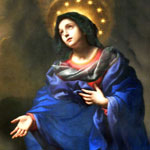 On this faith check let’s talk about why Catholics believe the Virgin Mary is not just Jesus’ mother, but our mother too.
On this faith check let’s talk about why Catholics believe the Virgin Mary is not just Jesus’ mother, but our mother too.
It was during the crucifixion in St. John 19 that Our Lord looked down at Mary and the apostle John at the foot of the cross and said to Mary, “Woman behold your son,†and to John, “Behold your mother.â€Â 1
Bear in mind here that Jesus is suffering the pains of the cross—He must be doing something bigger than simply asking John to watch after his Mother.  John here is a representative of all of Jesus’ followers, and Jesus is giving his mother to all of us.
In Revelation 12 John describes his vision of a “woman clothed with the sun,†2 who brings forth a male child to rule the nations and defeat the ancient dragon who is the devil.  Verse 17 says that the offspring of this woman are those who keep God’s commandments and bear testimony to Jesus.
Friends, God has given us Mary, the Woman chosen from all eternity, 3 to be our spiritual mother and draw us closer to her son, our Lord Jesus Christ.
1Â -Â Â Jn. 19:26-27
2Â -Â Â Rev. 12:1
3Â -Â Â cf. Gen. 3:15, Is. 7:14; Jer. 31:22, etc.
Tags: catholic apologetics, faith, Jesus, Lord Jesus Christ, mother
This entry was posted on Monday, August 5th, 2013 at 7:49 am
You can follow any responses to this entry through the RSS 2.0 feed.
Praying to Saints
[powerpress]
On this faith check let’s answer the question, “why pray to a saint when you can pray straight to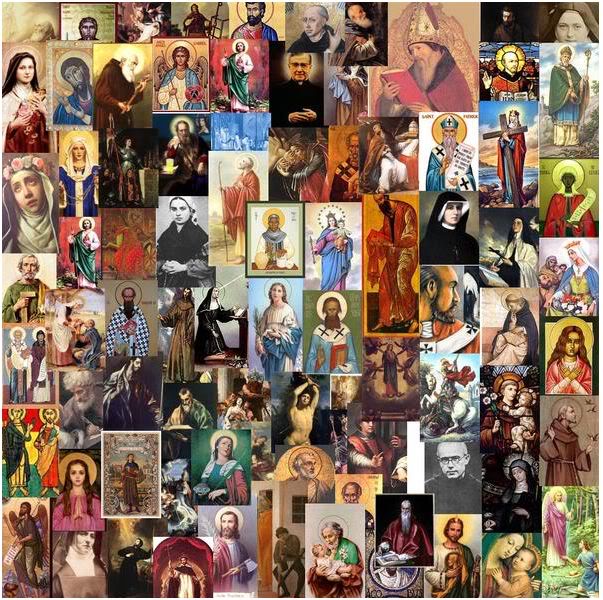 God?â€
God?â€
Of course, Catholics can and do pray straight to God. But we also pray to saints, not to worship them, but simply to ask for their prayers on our behalf, just like we ask our friends on earth to pray for us.
In the communion of saints we are spiritually connected to believers in the here and now and in the hereafter. For instance, Hebrews tells us we are surrounded by a “great cloud of witnesses,â€1 who are aware of what’s going on here. We read in Revelation that the prayers of the elders and saints in heaven are ascending before the throne of God.2
The prayers of the saints are powerful because they have been perfected in God’s grace and as St. James says, “the fervent prayer of the righteous has great power.â€3
Early Christian writings demonstrate that this practice was not a later corruption, but goes back to the very first centuries of Christianity. So let us join with Christians of all ages in saying “all you holy men and women, pray for us!â€
1 -Â 12:1
2 -Â 5:8; 8:3; etc.
3 -Â 5:16
Tags: cloud of witnesses, communion of saints, faith, prayers, prayers of the saints, praying to saints, saints, women
This entry was posted on Monday, July 29th, 2013 at 12:09 am
You can follow any responses to this entry through the RSS 2.0 feed.
Episode 25 Beginning to Pray Special: Â “The Face of the Bridegroom: Source of Mystical Prayer”
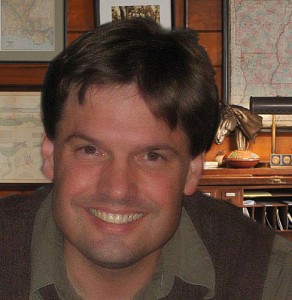
[powerpress]
Dr. Lilles’ continues his  Day of Recollection offered in April 2013.
The renewal of mental prayer in 16th Century Spain is characterized by a rediscovery of the face of Christ in contemplation. Â Using passages from her life, we will consider how St. Teresa’s contemplation of the face of Christ developed during her conversion. Â We will compare this with the way St. John of the Cross pondered the face of Christ in the Spiritual Canticle. Â These saints help us see the mysterious Face of Christ, hidden in suffering and reflected in the secret of our faith, as the threshold and source for mystical prayer.
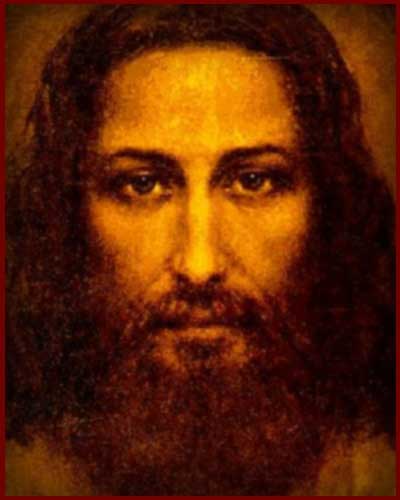
Dr.Anthony Lilles is a Catholic husband and father of three teaching Spiritual Theology at St. John Vianney Theological Seminary. He  teaches spiritual theology and spiritual direction to transitional deacons, and the spiritual classics to the men who enter the Spirituality Year, a year of prayer in preparation for seminary formation.  He is the author of the “Beginning to Pray”  catholic blog spot.
For other episodes in the series visit the Discerning Hearts page for Dr. Anthony Lilles
Tags: Anthony Lilles, contemplation, faith, prayer
This entry was posted on Tuesday, July 2nd, 2013 at 9:45 pm
You can follow any responses to this entry through the RSS 2.0 feed.
Episode 13 - Bram Stoker and “Dracula”  on Great Works in Western Literature with Joseph Pearce 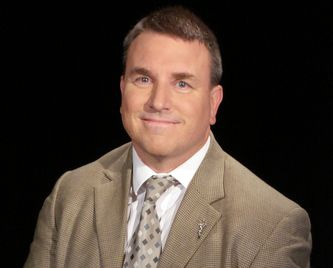
[powerpress]
When solicitor’s clerk Jonathan Harker travels to Transylvania on business to meet a mysterious Romanian count named Dracula, he little expects the horrors this strange meeting will unleash. Thus Bram Stoker’s 1897 novel of blood and passion begins, rapidly accelerating from Harker’s nightmarish experiences in Castle Dracula to a full-fledged vampiric assault on late-Victorian London itself. The story, narrated through a collection of 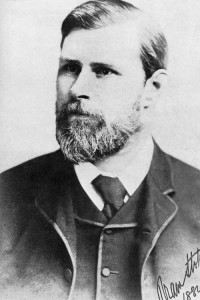 documents-primarily journal entries and letters-chronicles the desperate efforts of a band of gentlemen to protect the virtue of their ladies and lay to rest the ancient threat once and for all.
documents-primarily journal entries and letters-chronicles the desperate efforts of a band of gentlemen to protect the virtue of their ladies and lay to rest the ancient threat once and for all.
Often vacillating wildly between the terrible and the comic, Dracula at the same time brings to life a host of compelling themes: tensions between antiquity and modernity; the powers and limitations of technology; the critical importance of feminine virtue; the difference between superstition and religion; the nature of evil; and, perhaps most compellingly, the complex relationship between ancient faith and scientific enlightenment. More vivid than any of its varied film adaptations, and over a century after its first publication, Dracula still retains its sharp bite.
Based on the Ignatius Critical Edition, this series examines, from the Judeo-Christian perspective, the life,the times, and influence of authors of great works in literature .
Joseph Pearce  is currently the Writer-in-Residence and Visiting Fellow at Thomas More College of Liberal Arts in Merrimack, New 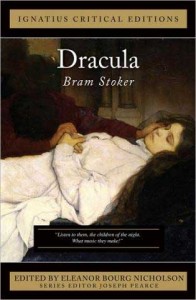 Hampshire. He is also Visiting Scholar at Mount Royal Academy in Sunapee, New Hampshire. He is also Visiting Scholar at Mount Royal Academy in Sunapee, New Hampshire. , as well as co-editor of the Saint Austin Review (or StAR), an international review of Christian culture, literature, and ideas published in England (Family Publications) and the United States (Sapientia Press). He is also the author of many books, including literary biographies of Solzhenitsyn, J. R. R. Tolkien, C. S. Lewis, G. K. Chesterton, and Oscar Wilde.
Hampshire. He is also Visiting Scholar at Mount Royal Academy in Sunapee, New Hampshire. He is also Visiting Scholar at Mount Royal Academy in Sunapee, New Hampshire. , as well as co-editor of the Saint Austin Review (or StAR), an international review of Christian culture, literature, and ideas published in England (Family Publications) and the United States (Sapientia Press). He is also the author of many books, including literary biographies of Solzhenitsyn, J. R. R. Tolkien, C. S. Lewis, G. K. Chesterton, and Oscar Wilde.
To learn more about the authors and titles available in the Ignatius Critical Editions
Tags: bram stoker, dracula, faith, ignatius critical editions, ignatius press, joseph pearce, religion, virtue
This entry was posted on Tuesday, June 25th, 2013 at 6:34 am
You can follow any responses to this entry through the RSS 2.0 feed.
St. Athanasius is one of the great Father and Doctors of the Church…the Father of Orthodoxy. His extraordinary life is shared with us by Mike Aquilina. When we say “consubstantial” at mass it’s due in part to St. Athansius and the battle against the Arian Heresy. Take a listen and learn more…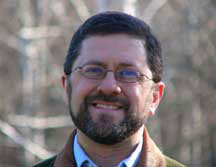
[powerpress]
More on the life of St. Athanasius from Pope Benedict at Vatican.va
GENERAL AUDIENCE
Paul VI Audience Hall
Wednesday, 20 June 2007
Continuing our revisitation of the great Teachers of the ancient Church, let us focus our attention today on St Athanasius of Alexandria.
>Only a few years after his death, this authentic protagonist of the Christian tradition was already hailed as “the pillar of the Church” by Gregory of Nazianzus, the great theologian and Bishop of Constantinople (Orationes, 21, 26), and he has always been considered a model of orthodoxy in both East and West.As a result, it was not by chance that Gian Lorenzo Bernini placed his statue among those of the four holy Doctors of the Eastern and Western Churches – together with the images of Ambrose, John Chrysostom and Augustine – which surround the Chair of St Peter in the marvellous apse of the Vatican Basilica.
Athanasius was undoubtedly one of the most important and revered early Church Fathers. But this great Saint was above all the impassioned theologian of the Incarnation of the Logos, the Word of God who – as the Prologue of the fourth Gospel says – “became flesh and dwelt among us” (Jn 1: 14).
For this very reason Athanasius was also the most important and tenacious adversary of the Arian heresy, which at that time threatened faith in Christ, reduced to a creature “halfway” between God and man, according to a recurring tendency in history which we also see manifested today in various forms.
In all likelihood Athanasius was born in Alexandria, Egypt, in about the year 300 A.D. He received a good education before becoming a deacon and secretary to the Bishop of Alexandria, the great Egyptian metropolis. As a close collaborator of his Bishop, the young cleric took part with him in the Council of Nicaea, the first Ecumenical Council, convoked by the Emperor Constantine in May 325 A.D. to ensure Church unity. The Nicene Fathers were thus able to address various issues and primarily the serious problem that had arisen a few years earlier from the preaching of the Alexandrian priest, Arius.
With his theory, Arius threatened authentic faith in Christ, declaring that the Logos was not a true God but a created God, a creature “halfway” between God and man who hence remained for ever inaccessible to us. The Bishops gathered in Nicaea responded by developing and establishing the “Symbol of faith” [“Creed”] which, completed later at the First Council of Constantinople, has endured in the traditions of various Christian denominations and in the liturgy as the Niceno-Constantinopolitan Creed.
In this fundamental text – which expresses the faith of the undivided Church and which we also recite today, every Sunday, in the Eucharistic celebration – the Greek term homooúsiosis featured, in Latin consubstantialis: it means that the Son, the Logos, is “of the same substance” as the Father, he is God of God, he is his substance. Thus, the full divinity of the Son, which was denied by the Arians, was brought into the limelight. (more…)
Tags: Church, faith, saints, St Athanasius
This entry was posted on Thursday, May 2nd, 2013 at 12:26 am
You can follow any responses to this entry through the RSS 2.0 feed.
To Nanna, daughter of Benincasa, a little maid, her niece, in Florence:
 Now, then, we must have light–otherwise it would not be enough. This light has to be the light of most holy faith. But the saints say that faith without works is dead. Therefore we need to exert ourselves virtuously all the time, and leave our childishness and vanities, and not behave any longer like worldly girls, but like faithful brides consecrated to Christ crucified; in this way we shall have a lamp, and oil, and light.
Heavenly Father, your glory is in your saints. We praise your glory in the life of the admirable St. Catherine of Siena, virgin and doctor of the Church. Her whole life was a noble sacrifice inspired by an ardent love of Jesus, your unblemished Lamb. In troubled times she strenuously upheld the rights of His beloved spouse, The Church. Father, honor her merits and hear her prayers for each of us. Help us to pass unscathed through the corruption of this world, and to remain unshakably faithful to the church in word, deed, and example. Help us always to see in the Vicar of Christ an anchor in the storms of life, and a beacon of light to the harbor of your Love, in this dark night of your times and men’s souls. Grant also to each of us our special petition . . . (pause to pray for your own intentions). We ask this through Jesus, your Son, in the bond of the Holy Spirit. Amen.
St. Catherine of Siena, Pray for us.
For the complete novena visit the St. Catherine of Siena Novena Page
Tags: faith, Jesus, saints, works
This entry was posted on Wednesday, April 24th, 2013 at 12:02 am
You can follow any responses to this entry through the RSS 2.0 feed.
“For God so loved the world that gave his only Son that whoever believes in Him should not perish but have eternal life”: this was the affirmation at the center of Pope Francis’ homily on Wednesday at Mass in the Domus Sanctae Marthae with the staff of the Fabric of St. Peter. Cardinals Angelo Sodano and Angelo Comastri concelebrated, and the Italian Interior Minister Anna Maria Cancellieri also attended.Â
[powerpress]
“The Lord saves us by His love: not with a letter, nor with a decree, but with his love,†a love so great that it led him to send his Son, who, “became one of us, walked with us,†and this, he said, “saves us.†The Holy Father went on to explain that “salvation†means, “the recovery of that dignity, which we have lost,†the dignity of being children of God.This is a dignity that grows, said Pope Francis, “until our final encounter with Him,†adding, “this is the way of salvation, and this is beautiful,†he continued, “for [it is a way] that only love can [forge].†The Holy Father went on to say “We are worthy, we are men and women of hope: this is what it means to be saved by love.†The problem, he explained, is that sometimes we want to save ourselves, “and we believe we can do it,†for example basing our security on money – and we think: “I have money, I am secure, [I have it] all, there are no worries, I have dignity: the dignity of a rich person.†“This,†said Pope Francis, “is not enough,†adding, “Think of the parable of the Gospel, of the man who had the full granary, who said, ‘I’ll make another to get more, and then I’ll sleep soundly,’ and the Lord says, ‘You fool! This evening you will die ‘. That salvation is wrong, it is a temporary salvation, it is also apparent salvation.â€
The Holy Father went on to say that, at other times, “We think we save ourselves with vanity, with pride,†that, “We believe ourselves powerful …,†and that “We mask our poverty, our sins, with vanity, with pride … Even that ends,†he said, but, “true salvation is in the dignity that God gives back to us in the hope that Christ has given us at Easter. “Let’s make today an act of faith,†said Pope Francis, “[Let us say]: Lord, I believe. I believe in Your love. I believe that Your love has saved me. I believe that Your love has given me the dignity that I had not. I believe that Your love gives me hope.â€
Tags: faith, hope, love, Pope Francis
This entry was posted on Wednesday, April 10th, 2013 at 3:22 pm
You can follow any responses to this entry through the RSS 2.0 feed.
Mike Aquilina offers us deep insight on the life of St. Cyril of Jerusalem.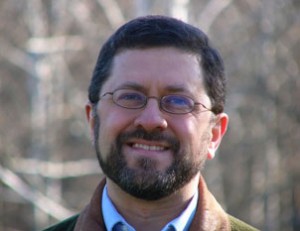
[powerpress]
More on St. Cyril of Jerusalem from vatican.va:
BENEDICT XVI’s GENERAL AUDIENCE
Paul VI Audience Hall
Wednesday, 27 June 2007
Dear Brothers and Sisters,
Our attention today is focused on St Cyril of Jerusalem. His life is woven of two dimensions: on the one hand, pastoral care, and on the other, his involvement, in spite of himself, in the heated controversies that were then tormenting the Church of the East.
Cyril was born at or near Jerusalem in 315 A.D. He received an excellent literary education which formed the basis of his ecclesiastical culture, centred on study of the Bible. He was ordained a priest by Bishop Maximus.
When this Bishop died or was deposed in 348, Cyril was ordained a Bishop by Acacius, the influential Metropolitan of Caesarea in Palestine, a philo-Arian who must have been under the impression that in Cyril he had an ally; so as a result Cyril was suspected of having obtained his episcopal appointment by making concessions to Arianism.
Actually, Cyril very soon came into conflict with Acacius, not only in the field of doctrine but also in that of jurisdiction, because he claimed his own See to be autonomous from the Metropolitan See of Caesarea.
Cyril was exiled three times within the course of approximately 20 years: the first time was in 357, after being deposed by a Synod of Jerusalem; followed by a second exile in 360, instigated by Acacius; and finally, in 367, by a third exile – his longest, which lasted 11 years – by the philo-Arian Emperor Valens.
It was only in 378, after the Emperor’s death, that Cyril could definitively resume possession of his See and restore unity and peace to his faithful.
Some sources of that time cast doubt on his orthodoxy, whereas other equally ancient sources come out strongly in his favour. The most authoritative of them is the Synodal Letter of 382 that followed the Second Ecumenical Council of Constantinople (381), in which Cyril had played an important part.
In this Letter addressed to the Roman Pontiff, the Eastern Bishops officially recognized Cyril’s flawless orthodoxy, the legitimacy of his episcopal ordination and the merits of his pastoral service, which ended with his death in 387.
Of Cyril’s writings, 24 famous catecheses have been preserved, which he delivered as Bishop in about 350.
Introduced by a Procatechesis of welcome, the first 18 of these are addressed to catechumens or candidates for illumination (photizomenoi) [candidates for Baptism]; they were delivered in the Basilica of the Holy Sepulchre. Each of the first ones (nn. 1-5) respectively treat the prerequisites for Baptism, conversion from pagan morals, the Sacrament of Baptism, the 10 dogmatic truths contained in the Creed or Symbol of the faith.
The next catecheses (nn. 6-18) form an “ongoing catechesis” on the Jerusalem Creed in anti-Arian tones.
Of the last five so-called “mystagogical catecheses”, the first two develop a commentary on the rites of Baptism and the last three focus on the Chrism, the Body and Blood of Christ and the Eucharistic Liturgy. They include an explanation of the Our Father (Oratio dominica).
This forms the basis of a process of initiation to prayer which develops on a par with the initiation to the three Sacraments of Baptism, Confirmation and the Eucharist.
The basis of his instruction on the Christian faith also served to play a polemic role against pagans, Judaeo Christians and Manicheans. The argument was based on the fulfilment of the Old Testament promises, in a language rich in imagery.
Catechesis marked an important moment in the broader context of the whole life – particularly liturgical – of the Christian community, in whose maternal womb the gestation of the future faithful took place, accompanied by prayer and the witness of the brethren.
Taken as a whole, Cyril’s homilies form a systematic catechesis on the Christian’s rebirth through Baptism.
He tells the catechumen: “You have been caught in the nets of the Church (cf. Mt 13: 47). Be taken alive, therefore; do not escape for it is Jesus who is fishing for you, not in order to kill you but to resurrect you after death. Indeed, you must die and rise again (cf. Rom 6: 11, 14)…. Die to your sins and live to righteousness from this very day” (Procatechesis, 5).
From the doctrinal viewpoint, Cyril commented on the Jerusalem Creed with recourse to the typology of the Scriptures in a “symphonic” relationship between the two Testaments, arriving at Christ, the centre of the universe.
The typology was to be described decisively by Augustine of Hippo: “In the Old Testament there is a veiling of the New, and in the New Testament there is a revealing of the Old” (De catechizandis rudibus 4, 8).
As for the moral catechesis, it is anchored in deep unity to the doctrinal catechesis: the dogma progressively descends in souls who are thus urged to transform their pagan behaviour on the basis of new life in Christ, a gift of Baptism.
The “mystagogical” catechesis, lastly, marked the summit of the instruction that Cyril imparted, no longer to catechumens but to the newly baptized or neophytes during Easter week. He led them to discover the mysteries still hidden in the baptismal rites of the Easter Vigil.
Enlightened by the light of a deeper faith by virtue of Baptism, the neophytes were at last able to understand these mysteries better, having celebrated their rites.
Especially with neophytes of Greek origin, Cyril made use of the faculty of sight which they found congenial. It was the passage from the rite to the mystery that made the most of the psychological effect of amazement, as well as the experience of Easter night.
Here is a text that explains the mystery of Baptism: “You descended three times into the water, and ascended again, suggesting by a symbol the three days burial of Christ, imitating Our Saviour who spent three days and three nights in the heart of the earth (cf. Mt 12: 40). Celebrating the first emersion in water you recall the first day passed by Christ in the sepulchre; with the first immersion you confessed the first night passed in the sepulchre: for as he who is in the night no longer sees, but he who is in the day remains in the light, so in the descent, as in the night, you saw nothing, but in ascending again you were as in the day. And at the self-same moment you were both dying and being born; and that water of salvation was at once your grave and your mother…. For you… the time to die goes hand in hand with the time to be born: one and the same time effected both of these events” (cf. Second Mystagogical Catechesis, n. 4).
The mystery to be understood is God’s plan, which is brought about through Christ’s saving actions in the Church.
In turn, the mystagogical dimension is accompanied by the dimension of symbols which express the spiritual experience they “explode”. Thus, Cyril’s catechesis, on the basis of the three elements described – doctrinal, moral and lastly, mystagogical – proves to be a global catechesis in the Spirit.
The mystagogical dimension brings about the synthesis of the two former dimensions, orienting them to the sacramental celebration in which the salvation of the whole human person takes place.
In short, this is an integral catechesis which, involving body, soul and spirit – remains emblematic for the catechetical formation of Christians today.
Tags: Church, doctor of the church, faith, father of the church, mike aquilina, mysteries, st cyril of jerusalem
This entry was posted on Monday, March 18th, 2013 at 12:04 am
You can follow any responses to this entry through the RSS 2.0 feed.
From Dr. Anthony Lilles’ blog “Beginning to Pray”
There are times when prayer feels wasted. Â We cry out from the very depths of our being begging to be heard, sometimes in tears, sometimes in desperate plight, sometimes with an overwhelming sense of personal unworthiness. Â Sometimes, when some sign of Divine Providence is most sought, our voices echo in lifeless silence.
In these moments, those who doubted our faith or considered us hypocrites, they feel themselves vindicated – sometimes with glee, sometimes with hidden sorrow. Â Here, the seemingly unanswered prayer mysteriously resounds in their hearts too. Â Behind the derision one faces for having dared to believe, there is also a painful solidarity with the whole of humanity. Â For every prayer that seems unanswered reaffirms a sense of alienation, of rejection, of unbearable misery in the heart of every man and woman since Eden.
In the story of salvation, the most contemporary doubt in the Father’s love is just another manifestation of this primordial reality. Â Christian prayer does not avoid this common human condition – it boldly enters this poverty to fill it with something new. Â If it humbly accepts all forms of mockery before the mystery of unanswered prayer, it is to offer this too as a living sacrifice to the Living God.
For the Christian, the tired sorrow of unanswered prayer has been made open to an explosive beatitude. Â The Word of the Father made this painful cry His own when He implicated Himself in our sin. Â In this, the Suffering Servant found a way so that we would not have to suffer our plight alone – our wounds are healed by His.
His last wordless cry of abandonment revealed His life’s project: He dared to offer with love to the Father His every breathe and heartbeat from first to last so that every human hardship might be completely enveloped in divine mercy. Â Now, by faith, His project can become our project. Â Because His offering to the Father was perfect in love, the Savior of the world fills our dying weakness with the secret freshness of new life whenever we offer it to Him with even the tiniest effort of solidarity. Â When prayer seems unanswered, the One who cried to the Father for love of us from crib to Cross is allowing us an opportunity to share in the salvific work of His own prayer.
Like the myrrh, the tears and the kisses that once anointed the feet of Jesus, prayer wasted on God for our brothers and sisters, for spouse and children, and even for ourselves, always takes on cruciform proportions – dimensions that extend from one horizon to the other, from height to depth, from what is visible to what cannot be seen. Â If such prayer weeps over abandonment, disappointment, frustration, injustice, inadequacy, failure, voids and weakness – such prayer also boldly cleaves with gratitude to the invincible hope that none of this can separate us from that astounding love revealed by the Risen Lord.
Dr. Anthony Lilles is the author of “Hidden Mountain, Secret Garden”
Available at Amazon.com as an ebook (click here), a paperback edition (click here).  You may also order a paperback edition at createspace.com.
Tags: Anthony Lilles, faith, heart, joy, love, prayer, reflection, solidarity
This entry was posted on Thursday, March 7th, 2013 at 12:35 pm
You can follow any responses to this entry through the RSS 2.0 feed.
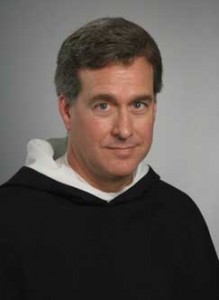
From Dominican Friars of the St. Joseph Province
Watch the video below of Father Peter John Cameron, O.P., editor-in-chief of “Magnificat†magazine, delivering the keynote address at a Catholic Convocation in the Diocese of Raleigh. Using humor and anecdotes, Fr. Cameron spoke about the Year of Faith and New Evangelization. “To put it simply, it [the New Evangelization] is an attraction,â€Â he said. Fr. Cameron added that the New Evangelization is about awareness of the need to rediscover our faith, attentiveness to a lived experience (realizing the needs of people today) and an honest appeal to what really moves people. He spoke of three essentials that Blessed Pope John Paul II said must be present in the New Evangelization: ardor, methods and expression. He provided an example of each, noting that ardor must reflect a love for all that is human.
Tags: faith, humor, Joseph Province, new evangelization
This entry was posted on Friday, February 8th, 2013 at 4:21 pm
You can follow any responses to this entry through the RSS 2.0 feed.
USCCA31 Â Chapter 25
[powerpress]
Archbishop Lucas offers insights on the US Catholic Catechism for Adults Chapter 25:
The first three Commandments treat our relationship to God. The last seven concern our relationship with each other. The First Commandment calls us to have faith in the true God, to hope in him, and to love him fully with mind, heart, and will. We respond to God, who has created and redeemed us and extends his providential care to us every minute of each day. The First Commandment fosters the virtue of religion that moves us to adore God alone because he alone is holy and worthy of our praise.
United States Conference of Catholic Bishops (USCCB)
The Most Reverend George J. Lucas leads the Archdiocese of Omaha.Â
For other episodes in the visit our Archbishop George Lucas page
This programs is based on:
More information can be found here.
We wish to thank the USCCB for the permissions granted for use of  relevant material used in this series.
Also we wish to thank Matt Wilkom  for his vocal talents in this episode.
[ezcc]
Tags: faith, relationship, religion, USCCB
This entry was posted on Wednesday, January 30th, 2013 at 1:12 pm
You can follow any responses to this entry through the RSS 2.0 feed.

